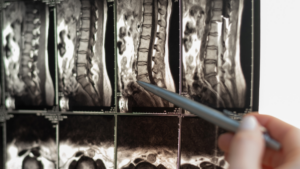
Low back pain, low back ache, sharp low back pain, stabbing in my back and the myriad other ways people describe pain in the lower spinal region. It is epidemic in our society and research indicates greater than 85% of Americans will suffer debilitating low back pain in adulthood. Research into this problem is fast and furious and has been going on for decades.
Spinal adjustment, as performed by a chiropractic physician, has long been associated with both the treatment and prevention of low back disorders. Well, researchers at the University of Florida wanted to isolate if the adjustment procedure itself is what is giving benefit or is it merely a placebo affect? Simply stated, a placebo affect is a person’s expectation of relief actually bringing about the relief itself and not any procedure…whether a manual procedure, surgery, medication or the like.
The findings of this study were recently published in The Journal of Pain. What the researchers concluded was “significantly more study participants…enjoyed good to excellent outcomes” with actual spinal adjustment.
Here’s what the researchers in the proverbial nutshell. Study participants were put into several groups:
- Patients who received a spinal adjustment
- Patients who received a “pretend” adjustment (the placebo)
- Patients who received spinal adjustment and told it may or may not be a real spinal correction
- Patients who received nothing at all
The participants, all of whom had low back pain, were randomly assigned to one of the four groups. They were then tested for pain to pressure (using a device called an algometer) or pain sensitivity to thermal (temperature) stimulus. The four test “procedures” were then performed and each participant re-tested. The ultimate conclusion was that the people who received a real spinal adjustment and those who received a real spinal adjustment and told it may or may not be real both enjoyed significant improvement in pain measurements. As noted above, the number of people enjoying the benefit was significant with good to excellent results! Wonderful…we knew that already but this study indicates it is the actual spinal correction via the adjustment that is improving appreciable pain sensitivity and not any expectation on the part of the patient that it will work!
Even more interesting, the researchers noted this significant benefit came as a result of stimulation of part of the spinal cord that resulted from the adjustment. So the relief was noted to have its source in the neurologic effect the spinal adjustment induced. That’s a big deal….why? Because people with chronic pain experience a fancy thing called “central sensitization” which means the nervous system in the spinal cord and brain become hyper-sensitive to stimulation. This is a big factor in what causes acute or new pain to become chronic or long term and keeps it going. The spinal adjustment, it was noted, decreased the excitability of part of the spinal cord and decreased this central sensitization.
Ultimately, this study demonstrates that the spinal adjustment worked and had its benefit by affecting the nervous system….absolutely great news for those suffering with pain!
Source:
- Joel E. Bialosky, Steven Z. George, Maggie E. Horn, Donald D. Price, Roland Staud, Michael E. Robinson. Spinal Manipulative Therapy–Specific Changes in Pain Sensitivity in Individuals With Low Back Pain (NCT01168999). The Journal of Pain, 2014; 15 (2): 136 DOI: 10.1016/j.jpain.2013.10.005


